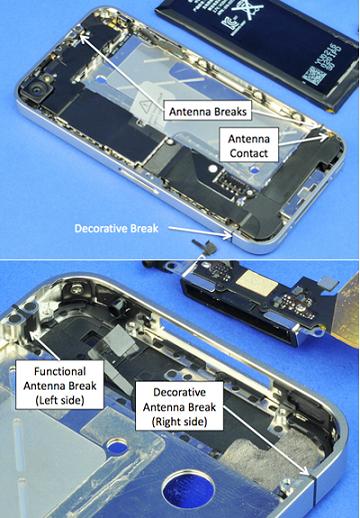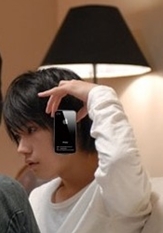有用户反映在使用苹果iPhone 4时会遇到手机接收信号差的问题,有分析师认为,这个问题可能是因为苹果采用智能手机的边框作为手机天线所导致。苹果公司在一份声明中承认了这个问题,并就用户在使用过程中如何拿手机提出了建议。
Gizmodo网站发表了来自手机用户的评论和视频,从中可以看到,当以某种方式来拿iPhone 4时,其手机接收信号的强度会下降。PC Magazine通过内部和外部的实验室测试证实这一问题的确存在。
有拆机专家推测,这个问题可能是因为苹果将手机天线和GPS天线嵌入到嵌到手机的金属框架所导致。当用户把手跨在两个天线之间的功能性缺口之间时,手会起桥梁的作用使信号通过这一缺口。这样就会改变天线的长度以及它的性能。

UBM TechInsights曾发表了一份iPhone 4拆解报告,该公司商业智能副总裁Jeff Brown表示,“我们还没有机会对这一看法进行测试。”
在拆卸过程中,UBM TechInsights展示了用于隔开手机天线和GPS天线的手机框的功能缺口。手机边框的另一侧也有一个缺口,但这个缺口除了使外观对称之外再无其它用途。
基于手机金属框的天线可能是iPhone 4的一个尝试。“我还不知道有其它智能手机用手机外框来当天线。”Brown表示。
通常,智能电话会用电话内的一根线或在扬声器所在的隔音腔嵌入一块折迭金属来用作天线。“‘使用手机的金属边框作为天线’的好处之一是这样做可以节省空间供更大体积的电池供用。”Brown认为。
苹果公司在一份声明中承认了这个问题,并建议用户不要遮盖住这个功能缺口——有用一个黑条在手机外壳上做标记。
苹果表示,不管是什么手机,如果紧紧地握住它,都将导致其天线性能产生一定程度的衰减,而握住手些的某些部位会比握住另外的部位使得天线效果更差,这取决于天线的位置。“如果您在使用iPhone 4时遇到这个问题,应避免握它的左下角,不要覆盖金属边框上黑条的两端,或简单地使用一个手机套”,它最后总结。

或许您得这样使用iPhone 4
这一问题以及“苹果的建议处理方法”与苹果公司精心打造吸引人的用户体验的传统相差甚远。
苹果的ipad也经历了Wi-Fi网络连接的天线问题。有好几个用户发贴抱怨苹果公司,称在有些情况下,iPad在其重新启动或从睡眠模式中醒来后,不能重新自动加入到一个已知的Wi-Fi网络。而苹果表示,在使用有些支持多频段的第三方的Wi-Fi路由器的时候,如果用户为每个网络使用相同的网络名称或者对每个网络使用不同的安全设置时,可能会发生Wi-Fi网络连接不上的问题。
第二页:参考原文(Poor antenna design may cause iPhone 4 issue, by Rick Merritt)
《电子工程专辑》网站版权所有,谢绝转载
{pagination}
Poor antenna design may cause iPhone 4 issue
by Rick Merritt
Some users are experiencing cellular reception problems with the Apple iPhone 4 that one analyst said could be due to Apple's novel use of the smartphone's frame as an antenna. Apple acknowledged the problem in a statement advising users on how to hold the phone.
The Gizmodo Web site published comments and videos from users showing loss of cellular reception when the iPhone 4 was held in certain ways. PC Magazine confirmed the problems based on internal and external lab tests.
One teardown expert speculated the problem may be due to what appears to be Apple's decision to embed the phone's cellular and GPS antennas in the metal frame of the case. When a user's hand covers a functional break between the two antennas, the hand bridges signals across the break. That can change the length of the antenna and thus its performance.
"We haven't had a chance to test this theory yet," said Jeff Brown, vice president of business intelligence at UBM TechInsights that published a teardown of the iPhone 4.
In its teardown, UBM TechInsights showed a functional break in the frame believed to be used to separate the cellular and GPS antennas. The frame also includes a break on the opposite side that has no function other than to provide a balanced symmetric look.
The frame-based antenna may be something of an experiment with the iPhone 4. "I am not aware of any frame-based antenna" in other smartphones, Brown said.
Typically smartphones implement an antenna with a wire inside the phone or a folded piece of metal embedded in the acoustic chamber where speaker resides. "One of the benefits [of using the frame as an antenna] is it can save space for a bigger battery," Brown said.
Apple acknowledged the problem in a statement advising users not to cover the functional break, identified by a black strip on the phone's case.
“Gripping any mobile phone will result in some attenuation of its antenna performance, with certain places being worse than others depending on the placement of the antennas,” Apple said. “If you ever experience this on your iPhone 4, avoid gripping it in the lower left corner in a way that covers both sides of the black strip in the metal band, or simply use one of many available cases,” it concluded.
The issue—and Apple's recommendations for handling it—fly in the face of the company's tradition of carefully crafting compelling user experiences.
Apple also experienced an antenna problem with Wi-Fi networking on its iPad. After several users posted complains Apple said that under certain conditions, the iPad may not automatically rejoin a known Wi-Fi network after restart or waking from sleep. The issue can occur with some third-party Wi-Fi routers supporting multiple bands when users use the same network name for each network or use different security settings for each network, Apple said.